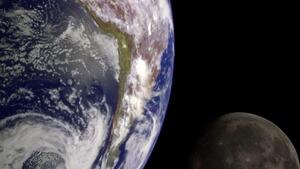MyWorldGo
Don't Miss This: Earth to Capture Rare 'Mini-Moon' 2024 PT5 on Sept 29—What You Need to Know!
Blog Information
- Posted By : Ava Parker
- Posted On : Oct 25, 2024
- Views : 20
- Category : Technology
- Description : Our planet’s constant celestial companion is about to receive some temporary company.
Overview
- Earth is set to welcome a temporary visitor from space. Starting this Sunday, our planet will capture a nearby asteroid, pulling it into orbit until it departs on November 25. This two-month stay will classify the asteroid as one of the “mini-moons” before it resumes its journey around the sun.
The asteroid in question, named 2024 PT5, was identified in August through a NASA-supported detection system in collaboration with a South African observatory. However, don’t rush to grab your binoculars; at just 33 feet wide—about the length of a Greyhound bus—it is too dim to be seen with the naked eye or even a standard telescope.
In our solar system, nearly 300 moons orbit the eight planets and Pluto, with ongoing discoveries as observation techniques advance. Most of these moons are found around the gas giants, Saturn and Jupiter. Moons vary widely in shape and size, but they all share the common trait of orbiting a larger celestial body. While these natural satellites are plentiful, they hold particular importance for us due to Earth’s own moon, a significant rocky body about one-quarter the size of our planet and located approximately 239,000 miles away.
Earth has previously captured asteroids, drawing them into orbit with its gravitational pull. However, many of these space rocks pass by without completing a full orbit. Compared to recent mini-moons, 2024 PT5 will have a brief stay. For instance, an asteroid named RH120 orbited Earth for a year from July 2006 to July 2007. Astronomers suspect that another asteroid, which escaped in May 2020, may have been in orbit for several years.
A significant discovery regarding mini-moons has been made by two astronomers from the Universidad Complutense de Madrid, who analyzed the paths of near-Earth objects. Their findings were published in the journal Research Notes of the AAS. Earlier studies using NASA’s Asteroid Terrestrial-impact Last Alert System had already confirmed that this space rock would not collide with Earth.
While studying 2024 PT5’s orbit, researchers Carlos de la Fuente Marcos and Raúl de la Fuente Marcos traced its origins back to the Arjuna asteroid belt, a collection of small rocks near Earth that was discovered in the early 1990s. For more information on this cosmic event, visit [T8 Tech](https://t8tech.com/science/get-ready-for-a-cosmic-surprise-earth-to-capture-new-mini-moon-on-sept-29/).
